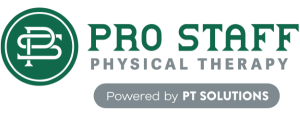8 Signs You Need Occupational Therapy

What is Occupational Therapy?
Occupational therapy is a practice that aims to improve the quality of life for people with various disabilities, injuries, or illnesses. Studies have shown that occupational therapy can help people recover, improve, and maintain the skills needed for everyday life. It focuses on helping people become as independent as possible by improving their skills, abilities, and quality of life.
Pro Staff occupational therapists will help you with everything from getting around the house to doing your job, depending on your needs. They can also help you determine what kind of equipment is best suited for your needs.
What Conditions Does Occupational Therapy Treat?
Occupational therapy is a type of therapy that focuses on the way people do things in their everyday lives.
Occupational therapists treat many different conditions, including:
- Neurological disorders (such as brain or spinal cord injuries)
- Spinal cord injuries
- Developmental disabilities
- Chronic pain conditions
- Arthritis
- Aging and aging-related conditions
8 Signs You Need Occupational Therapy
Occupational therapy is a great way to treat pain and other issues impacting your day-to-day life. But what if you’re not sure whether it’s right for you?
We’ve put together a list of 8 signs that may indicate that occupational therapy is just what you need to get back on track:
- You have trouble completing tasks at home or at work because of the amount of effort required.
- You are having trouble lifting, bending, reaching, or getting up from a seated position without using your hands or arms for support.
- You are experiencing pain from an injury or illness (e.g., arthritis) that has affected your ability to do everyday tasks without assistance from others in some way (e.g., getting dressed).
- Your job requires repetitive motions that have caused discomfort over time due to repetitive strain injuries such as carpal tunnel syndrome or tendinitis in the shoulders and back muscles; these conditions can lead to significant discomfort during work hours if left untreated over time!
- You struggle with balance issues, especially when walking outdoors due to slippery surfaces like ice/snow during winter.
- You have trouble sitting still for long periods due to joint and muscle problems such as arthritis or fibromyalgia (e.g., foot).
- You are having difficulty performing activities requiring fine motor skills (e.g., sewing) because of poor hand and fingers dexterity.
- You have trouble remembering names or faces.
Pro Staff’s OT’s specialize in evaluating and treating upper extremity injuries and post-operative conditions to the shoulder, upper arm, elbow, forearm, wrist, hand, and digits.
How Long Is an Occupational Therapy Treatment Course?
The length of occupational therapy treatments varies by patient and the type of treatment you’re getting. For example, suppose you’re recovering from surgery. In that case, your therapist may schedule individual sessions once a week for six weeks and then recommend coming in once every two weeks for another six weeks. If you have trouble with basic movement or get confused easily, however, your therapist may recommend coming in every day for 30 minutes over the course of several months.
How your therapist diagnoses and treats your condition will determine how often you come in for occupational therapy sessions. Your therapist will want to see you regularly to monitor your progress and ensure everything is going well with treatment.
Who Should See an Occupational Therapist?
If you’re experiencing a problem with your ability to do everyday tasks, like dressing yourself or using the bathroom, then seeing an occupational therapist may be right for you.
Occupational therapists help people who have difficulties with everyday tasks due to a physical or mental disability, injury, illness, or disease. They use their movement and body mechanics training to help clients achieve their goals and participate fully in day-to-day tasks. Occupational therapists look at the relationships between people’s occupations and their daily challenges and how they are affected by their environment.
Why Choose Pro Staff for Occupational Therapy?
At Pro Staff, the best way to help our patients is to understand them. We want you to feel comfortable with us and confident in the treatment we provide. That’s why we strive to ensure that every patient has a personal therapist who takes the time to get to know them and their unique needs. With our team of therapists, you can be sure that you will receive high-quality care from a professional who truly cares about your health and well-being.
Pro Staff offers services for various clients, including schools and other facilities that employ staff members with disabilities or injuries. Our OT’s couple each client’s treatment with education, activity modifications, joint protection techniques, ergonomics, adaptive equipment (AE), and individualized home exercise programs (HEP) to accelerate one’s function and outcomes. If you’re interested in learning more about Pro Staff’s occupational therapy services, contact us today!
Pro Staff Institute, LLC, has a network of outpatient physical rehabilitation centers in New Jersey. Pro Staff was founded in 2010 by Frank Pavlisko and Michael Maffucci. Through Frank’s 25 plus years experience in Physical Therapy and Michael’s experience in Management Services, our goal is to exceed customer expectations by providing the highest quality of service in a fun, family, friendly, and encouraging environment.
PRO STAFF LOCATIONS
OFFERING CERTIFIED
HAND THERAPY
Managing Diabetes: The Role of Physical Therapy
Managing Diabetes: The Role of Physical Therapy As of 2024, approximately 38.4 million Americans, or 11.6% of the U.S. population, have diabetes. Of these, 29.7 million cases are diagnosed, while an estimated 8.7 [...]
Staying Active and Injury-Free During Summer Activities
Staying Active and Injury-Free During Summer Activities Summer is a fantastic time to engage in outdoor sports and physical activities. Whether playing soccer, tennis, cycling, or jogging in the park, staying active is [...]
The Importance of Posture: How Proper Alignment Can Prevent Pain and Injury
The Importance of Posture: How Proper Alignment Can Prevent Pain and Injury In today's fast-paced world, where many hours are spent over desks, smartphones, and computers, posture is often neglected. Poor posture can [...]




